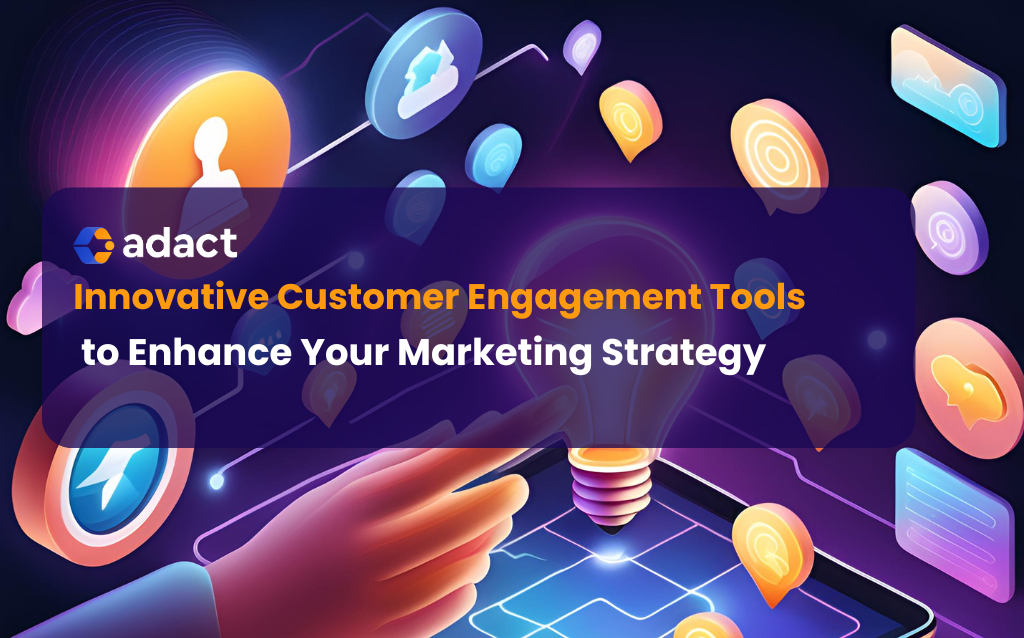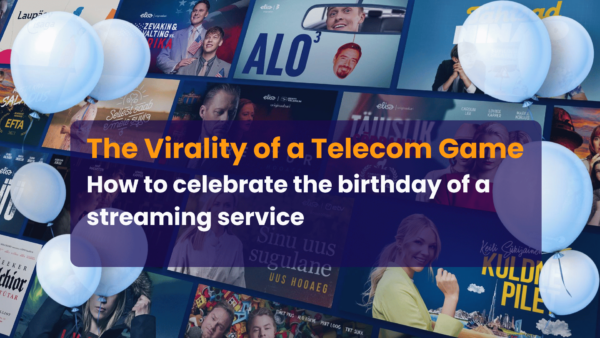In today’s competitive landscape, building strong relationships with customers is more important than ever. Engaged customers are loyal customers—they’re more likely to make repeat purchases, recommend your brand to others, and provide valuable feedback. But how do you effectively engage with them? The answer lies in leveraging the right customer engagement tools. These powerful tools can transform passive interactions into active, meaningful engagements that feel natural and rewarding to the customer while providing businesses with valuable insights and increased return on investment.
Understanding Customer Engagement Tools
Customer engagement tools are platforms and applications designed to help businesses interact with their customers across various touchpoints. These tools facilitate meaningful interactions, personalize experiences, and ultimately enhance customer satisfaction and loyalty. They include a diverse range of applications, from sophisticated Customer Relationship Management (CRM) systems that log every customer interaction and preference, to real-time chat solutions and powerful analytics platforms that help businesses gauge and refine their engagement strategies. By integrating these tools, businesses can ensure a more personalized and responsive customer experience, leading to enhanced brand loyalty and increased customer lifetime value.
Why Investing in Customer Engagement Tools Matters
- Improved Customer Relationships: By utilizing customer engagement tools, businesses can foster deeper connections with their audience. These tools enable tracking of individual preferences, past behaviors, and purchasing patterns, allowing businesses to tailor their communication and offerings to each customer’s unique needs and desires.
- Personalized Experiences: With features like AI-driven recommendations and personalized messaging, customer engagement tools can deliver customized content that resonates with individual customers, enhancing interaction quality and satisfaction. Personalization not only meets consumer expectations but also has been shown to drive up to 80% conversion increase in some cases.
- Increased Loyalty and Retention: Engaged customers are happy customers who stick around. Tools that integrate direct channels of communication such as live chats, personalized emails, and social media interactions, help nurture this customer loyalty by addressing inquiries promptly and providing exceptional customer service.
- Valuable Insights: Leveraging data analytics, businesses gain access to data-driven insights to refine their strategies. These insights help in understanding customer behavior, identifying trends, and making informed decisions to improve products, services, and overall customer experience.
Categories of Customer Engagement Tools
Let’s explore the various types of customer engagement tools available to marketers and businesses.
1. Customer Relationship Management (CRM) Systems
What They Do: CRMs centralize customer data, tracking interactions and sales pipelines to help businesses manage relationships effectively. They act as a single source of truth for your customer data, allowing teams across the organization to stay aligned and informed.
Popular Tools:
- Zoho CRM: Offers email marketing, lead scoring, and internal chat integration to streamline communication. With its intuitive interface and customizable modules, Zoho CRM helps businesses adapt workflows to match their unique processes. Explore Zoho CRM.
- HubSpot CRM: Provides a full suite of tools for marketing, sales, and customer service with robust integration capabilities. HubSpot’s free CRM platform enables businesses to align their sales and marketing efforts seamlessly.
2. Customer Feedback and Survey Tools
What They Do: Collect and analyze customer feedback to improve products, services, and customer experience. These tools provide businesses with the insights needed to solve issues before customers churn and to recognize patterns that point to successful customer experiences.
Popular Tools:
- SurveyMonkey: Allows for multichannel feedback collection with customizable surveys. With its easy-to-use interface and powerful analytics capabilities, businesses can gather actionable insights directly from their audience.
- Typeform: Offers interactive forms and surveys that enhance user engagement. Typeform’s unique conversational data collection style makes feedback gathering less daunting for respondents and more engaging.
Enhance your feedback collection with customer engagement gamification.
3. Live Chat and Chatbots
What They Do: Provide real-time assistance to customers on your website or app. They bridge the gap between online visitors and companies, offering solutions to queries instantly, thus improving satisfaction rates and reducing bounce rates.
Popular Tools:
- LiveChat: Connects customers with support agents instantly, improving satisfaction. LiveChat’s analytics provide insights into chat occurrences, satisfaction rates, and nonprofit use cases.
- Drift: Combines chatbots with live chat for automated and personalized conversations. By using Drift’s conversational marketing tools, businesses can create meaningful interactions that drive visitors through their sales funnels efficiently.
Discover fun activities for employee engagement to boost your team’s effectiveness with these tools.
4. Social Media Management Tools
What They Do: Manage and analyze your social media presence across platforms. Social media management tools can give you an all-in-one space to schedule posts, engage with followers, and track social media ROI.
Popular Tools:
- Sprout Social: Consolidates messages and provides engagement metrics. Sprout Social allows businesses to manage their social media profiles with intuitive publishing tools and insightful analytics.
- Hootsuite: Schedules posts and monitors social interactions to streamline your social strategy. Its robust platform helps businesses manage multiple accounts in one place, making efficient use of social media resources.
5. Personalization and Recommendation Engines
What They Do: Use customer data to deliver personalized content and recommendations. Personalization engines use sophisticated algorithms and AI to offer highly individualized experiences to consumers.
Popular Tools:
- Bloomreach: Integrates data to create unified customer profiles for tailored experiences. With its powerful AI capabilities, Bloomreach helps e-commerce businesses deliver targeted and contextually relevant content.
- CleverTap: Uses AI to predict customer behavior and personalize interactions. With CleverTap’s engagement platform, businesses can send meaningful communications that increase retention rates by understanding user profile and history.
6. Analytics and Data Management Tools
What They Do: Collect, organize, and analyze customer data for insights. These tools help businesses mine valuable insights from their data, driving informed marketing strategies.
Popular Tools:
- Google Analytics: Tracks website traffic and user behavior, providing detailed reports that help businesses understand how users interact with their sites.
- Segment: Centralizes customer data and integrates with other tools. Segment’s platform allows you to collect customer interaction data across platforms and routes it to preferred tools for deeper analysis and understanding.
7. Gamification Tools
What They Do: Incorporate game elements into marketing efforts to drive engagement. By leveraging game mechanics, businesses can enhance user interaction and engagement with their brand.
Recommended Tool:
- Adact: A no-code gamification marketing platform that helps businesses create interactive content like quizzes, mini-games, and surveys. With over 30 game templates and multi-language support, Adact enables you to shift from passive content to active user participation. This results in up to 80% higher conversion rates and enhanced brand awareness. Learn more about Adact.
Key Features to Consider When Selecting Tools
When choosing the right customer engagement tools, consider the following features:
Data Analytics and Insights
Tools should provide comprehensive analytics to understand customer behaviors and preferences, allowing you to tailor your marketing strategies effectively. Choosing tools with strong analytical capabilities ensures that your customer engagement strategy is data-informed.
Integration Capabilities
Ensure seamless integration with existing systems like your CRM, email marketing platforms, or social media channels. Effective integration minimizes data silos and provides a unified view of customer interactions, improving customer engagement outcomes.
Automation and Personalization
Look for automation features that enable personalized interactions at scale—vital for delivering timely and relevant content to customers. Automation helps businesses engage with customers efficiently while maintaining a personal touch.
Scalability and Flexibility
Choose tools that can grow with your business and adapt to changing needs, ensuring long-term value. Scalable systems are designed to handle increasing volumes of user engagement as your business expands without sacrificing performance or user experience.
How These Tools Enhance Your Marketing Strategy
By leveraging customer engagement tools, you can:
- Personalize Marketing Efforts: Deliver content that resonates with individual customers, improving engagement. Personalization increases conversion rates by making each customer feel uniquely valued and understood.
- Improve Customer Experience: Provide fast, efficient support and interactions that boost satisfaction. Engaged customers who feel heard and appreciated are more likely to favorably interact with your brand and refer it to others.
- Gain Actionable Insights: Make data-driven decisions to refine your marketing strategies. By leveraging the vast amount of data collected through engagement tools, businesses can fine-tune their marketing campaigns for maximum effectiveness.
- Increase Engagement Rates: Interactive tools like gamification can significantly boost participation and conversion rates. By turning routine engagements into fun and rewarding experiences, gamification strategies can help businesses capture and hold customer interest.
Selecting the Right Tools for Your Business
Consider the following steps:
- Identify Your Goals: Determine what you want to achieve—be it increasing engagement, improving customer support, or collecting feedback. Clearly defined goals help in selecting the tools that align best with your business objectives.
- Assess Your Needs: Evaluate which tool categories align with your objectives and assess the tool’s functionality against these needs.
- Test and Compare: Utilize trial periods to test tools and assess their usability and effectiveness. Testing ensures the tool meets operational needs while supporting the strategic objectives of the business.
- Consider Your Budget: Balance the features you need with what you can afford. Cost-effectiveness is important, so evaluate the long-term benefits of investing in these engagement tools and consider potential feature trade-offs based on budget.
Harnessing Gamification with Adact
Gamification has emerged as a powerful strategy to engage customers by making interactions fun and rewarding. By adopting elements of game design in non-game contexts, businesses can create compelling user experiences that encourage deeper collaboration and engagement.
How Adact Can Help:
- Interactive Campaigns: Create quizzes, mini-games, and digital raffles without any coding. Adact’s platform empowers marketers to use gamification effectively to capture user interest and drive higher participation rates.
- High Conversion Rates: Clients have seen up to 80% higher conversion rates using Adact, showcasing how effective gamification can be in invigorating stagnant engagement metrics.
- Analytics and Insights: Gain valuable consumer insights to refine your marketing efforts. With access to detailed analytics, businesses can make data-driven decisions and create more impactful marketing strategies.
- Easy Integration: Seamlessly integrate with your CRM and other marketing tools. Adact’s non-intrusive implementation ensures that user engagement strategies can be rolled out quickly and efficiently without requiring significant infrastructural changes.
Read about successful customer engagement gamification strategies.
Frequently Asked Questions
What is a Customer Engagement Tool?
A customer engagement tool helps businesses interact with customers through various channels, enhancing relationships and driving loyalty. They encompass a wide range of functionalities, from data analytics to direct communication channels, making them essential in contemporary marketing strategies.
What are Customer Engagement Techniques?
These are strategies like personalized messaging, feedback collection, and gamified content that encourage active customer participation. When deployed effectively, these techniques foster a stronger emotional connection between a brand and its customers.
How Do You Engage Customers with Products?
By offering interactive experiences, personalized recommendations, and responsive support, you can deepen customer engagement with your products. Implementing these strategies ensures customers feel understood and valued, encouraging loyalty and repeat business.
What are the Types of Customer Engagement?
Customer engagement can be emotional, social, contextual, or convenient, each requiring different strategies and tools. Each type of engagement has its own unique characteristics and methods of fostering a deeper connection with consumers.
Explore consumer engagement examples for ideas on how to connect with your audience.
Conclusion
Investing in the right customer engagement tools is essential for enhancing your marketing strategies and delivering exceptional customer experiences. By understanding your needs and exploring the options available, you can select tools that will help your business thrive. With the proper selection of tools tailored to your business objectives, you can transform customer interactions into meaningful engagements that deliver value both to your customers and your business operations.
Ready to transform your customer engagement? Try incorporating gamification into your strategy with Adact.
Enhance your next event with these customer engagement event ideas and boost audience participation.




